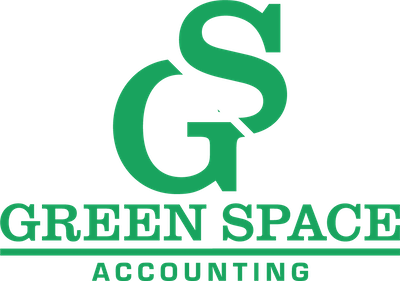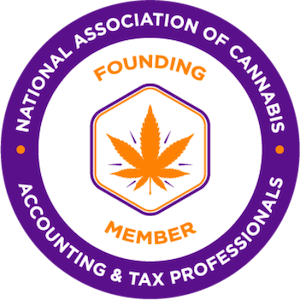We’ve come a long way from cannabis being a primary target of the misguided War On Drugs.
The first revolutionary step came back in 1992 when the first medical cannabis dispensary, The San Francisco Cannabis Buyers Club, opened itself to the public to serve patients.
Soon after, both Cannabis Buyers Club founders co-authored Proposition 215 to legalize medical cannabis in California in 1996.
It took 17 years from that point for Annie’s, a Colorado-based medical cannabis dispensary, to receive the US’s first license to sell recreational (also known as adult-use) cannabis in 2013.
Five years after that, in 2018, Massachusetts awarded the east coast’s first two recreational cannabis licenses.
We’re well into 2022, and adult-use cannabis use is legalized in 19 states, Guam and Washington DC. Furthermore, the industry is booming, with national cannabis sales skyrocketing upward by 40% last year, reaching $25 billion. Even better, the industry is playing its part in bolstering the economy, supporting 428,059 total jobs.
The growth in the cannabis space is promising. All the same, there are still many challenges facing dispensary owners.
Namely, legal and regulatory issues will always present hurdles since cannabis remains a Schedule I drug federally. Banking-related obstacles persist since traditional banking services aren’t readily available for US-based cannabis companies.
On top of the above challenges, the Federal Reserve raised interest rates this year, making it more difficult for cannabis dispensaries to gather capital to bolster long-term growth.
There’s also the matter of a saturated market. Entrepreneurs far and wide now see how lucrative recreational cannabis can be, and dispensaries are popping up everywhere. Establishing a foothold with a reliable, profitable clientele isn’t necessarily guaranteed.
Fortunately, dispensaries can be incredibly profitable if you follow the correct steps, which we’re providing in the ultimate guide for understanding dispensary profitability.
Part 1: Medical vs. Adult-Use Cannabis
Medical cannabis is for patients who’ve been recommended cannabis products by their doctors. You can only make purchases if you’ve been registered with the state and hold a valid Medical Marijauna Card. Over 23 states have legalized medical dispensaries (e.g., New Jersey, Rhode Island, Connecticut, Illinois, Oregon, Minnesota, Nevada, Washington, and California), adhering to federal restrictions.
Medical dispensaries are drastically different than adult-use dispensaries in the way they operate. While they may carry similar products, medical dispensaries will have a stricter protocol on who they allow inside, how much you can purchase, and how much you’re taxed. It’s important to note, however, that this does vary from state to state.
The Difference In State-to-State Costs
The potential profitability of your dispensary can be limited or bolstered by the state in which it’s located.
It’s through the following three ways that the state will influence your dispensary’s ability to turn a profit:
Licensing costs
- In the regulatory sense, obtaining licensing from state and municipal governments is incredibly hard.
- These licenses can be exponentially expensive, depending on where you’re located.
- The square footage of your operation can dictate your licensing fees, depending on the state. Conversely, other states charge massive upfront fees no matter the size of your dispensary.
- There’s no US-wide standardized licensing process, so choosing the state for your operation should be a strategic decision. Otherwise, it could drain a massive chunk of your capital upfront.
- For further context, the average cost per square foot of a commercial licensing and leasing is between $17 and $18. In Oregon, it’s between $8 and $9
Operating electric bill
- Your operating electric bill will be one of your dispensary’s most significant year-over-year expenses (especially if you grow your own product).
- Your choice in lighting system and equipment will dictate much of your costs, but the state decides how much you pay per kilowatt hour.
- Here are some examples of the difference a state can make for electricity:
- The Louisana price per kilowatt hour in 2019 was 9.37c
- The same year, the price per kilowatt was 32.76c in Hawaii
- By choosing a state with cheaper utilities for your dispensary, you can avoid having your electric bill cut into your profits too much.
Revenue wholesale price per pound
- Research historical wholesale cannabis product prices per pound in your state.
- Viable data is limited, as there’s only about a half decade’s worth. Still, a state-to-state wholesale price per pound pattern has emerged.
- There tends to be a loftier price per pound sales point in the year after adult use is legalized. Then, as the market familiarizes itself with regulations, a flood of supply continually reduces the price per pound.
- Within 3 years of legalization, the per-pound prices get halved.
- Be mindful of these factors because it might be illegal to traffic cannabis products from state to state if you wish to operate in multiple states.
- For context, wholesale cannabis costs $750 per pound in California, while it costs $1,000 per pound in Massachusetts.
Before moving forward, we’ll double back toward the licensing fees to explore them through a different lens.
In a state new to recreational cannabis like New Jersey, the annual retailer license fee is $10,000.
California, a state long rooted in the cannabis industry, has a $1,000 application fee. If approved, the licensing fee can land between $4,000 and $120,000, depending on your dispensary’s estimated value.
Part II: Initial Lease and License
We’ve already discussed state-to-state differences in licensing costs and how the process can be more rigorous in various regions.
Regardless of your state, expect to create an executive summary, marketing plan, business model, financial plan, cannabis business plan, and a real estate plan for any regulatory body approving your license.
There’s also the matter of finding real estate. We’ve discussed the price per square footage in different states in the previous section, but other factors must be considered. For instance, there’s the property type you want.
Note that the cannabis space deals with government scrutiny that can border on impossible if you aren’t careful. You need connections with the right stakeholders and investors to best handle to situation. Otherwise, you can be denied real estate and licensing without much reason, or your terms to get your license might be virtually impossible.
The federal illegality of cannabis makes landlords hesitant to lease to cannabis business owners. As a result, there are more private funders for purchasing, who will lease back to the operator.
Expect to pay $100,000 annually in rent. However, if your dispensary needs renovations, throw $50,000-plus onto your upfront costs.
Lastly, you’ll need to weigh property taxes chewing into your profits if you purchase the property outright.
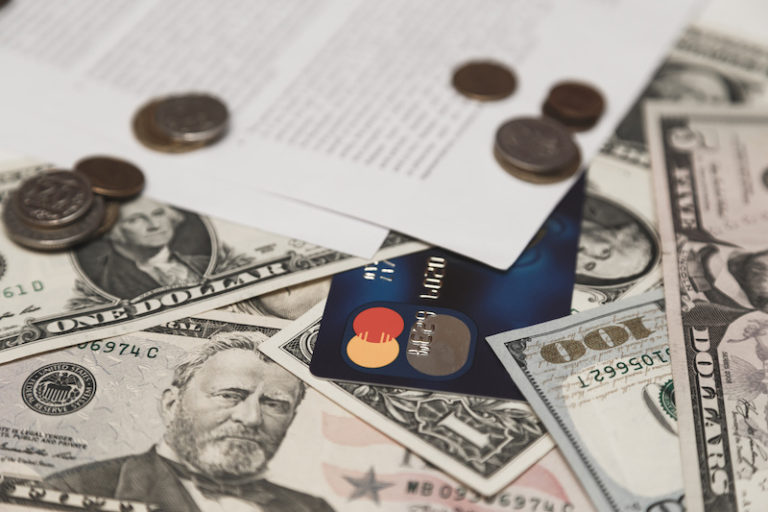
Banking Fees
Around 700 US-based banks and credit unions service cannabis companies openly, but they all come with varying rules, compliances, and regulations.
Choosing the wrong bank could lead to sky-high fees. The bank in question will want to account for the risk of having a cannabis-based client. To that point, there are holding fees of up to $2,000 per month.
We suggest that smaller startups try to work with state-run credit unions instead of large banks since they have fewer federal regulations. These unions are given guidelines to work with smaller cannabis businesses.
Also, stay on top of regulations to ensure your company remains low-risk for banks. Getting hit with sanctions due to compliance issues makes you even riskier for financial institutions.
Check our cannabis banking guide for more in-depth information. Following these tips can help you minimize your banking fees.
Electronics/Security
Electronics are a significant part of a dispensary’s success, with each square foot of space containing inventory worth tens of thousands of dollars. As such, you’ll require a robust security system and a POS system that’s fully compliant to efficiently manage inventory.
Part III: Ancillary Costs
Rent
As mentioned above, expect to pay $100,000 annually in rent, on top of $50,000-plus in upfront costs for additional renovations.
Employee Costs
Your dispensary could be a small business, but you’ll still need a high-functioning team to operate efficiently and profitably. Expect your annual payroll to hover around $250,000, even if you don’t have a large operation. If your dispensary is more expansive, expect employee costs to be exponential, especially if you want the top available talent.
Avoid payroll-based headaches–and find ways to get your payroll working to your advantage–by partnering with Green Space Accounting.
Electricity Costs
We’ve discussed the electricity costs already. Electronics are a must-have in the industry, but you can mitigate these costs by locating your dispensary in a state with low per kilowatt-hour rates.
Security
The average annual salary for dispensary security is over $40,000. Provided you hire a third-party security provider, navigate the pricing based on that number.
Legal Advisory
Given the risk involved in running a cannabis dispensary, you’d be wise to hire an attorney on retainer to help keep you compliant and updated on regulatory changes.
Since running a dispensary means you’ll be open to lawsuits, an attorney, who’s on your side, will have you prepared for the worst and prevent disastrous consequences. Still, be ready for this to cost you $50,000 per year.
Part IV: Introducing Tax 280e
The IRS-mandated federal statute known as the 26 US Code Section 280e opposes “illegal” businesses. It’s also a constant headache for US-based entrepreneurs in the cannabis industry, costing them 70%-plus in tax rates and chewing away at their earnings.
280e is a tax rule that stems back to Regan’s War on Drugs.
In 1981, a convicted hard drug trafficker named Jeffrey Edmondson tried to deduct ordinary business expenses (e.g., packaging costs, phone bills, vehicle costs) from his illegal business. He initially won his tax court case, but the courts overturned the decision a year later.
Tax Code 280e Prevents Standard Deductions
Overturning the Edmonson case set the precedent that business owners selling Schedule I or II controlled substances couldn’t deduct expenses connected with their illegal operations.
Schedule I and II controlled substances are defined as having no medical use while showing the possibility of being abused under the Controlled Substance Act.
Unfortunately, cannabis is still federally classified as a Schedule I controlled substance, and dispensary owners are viewed as traffickers by federal lawmakers.
Of course, statewide, licensed dispensary owners are viewed as legitimate businesspeople. Still, the IRS has a federal purview and treats cannabis entrepreneurs as such. Thus, if you run a cannabis business, you’re prohibited from the benefit of tax deductions, ensuring you’re taxed for all of your business income.
Imagine your dispensary and a non-cannabis business both earned a gross revenue of $1,000,000, with the costs of goods sold being $650,000. This yields a $350,000 gross income.
In the above instance, the non-cannabis business gets to claim $200,000 while you get to claim zero. Therefore, the non-cannabis business owner has a $150,000 taxable income, while yours stays at $350,000.
Optimizing Cost of Goods Sold
Dispensaries and other cannabis-based businesses can deduct the cost of goods sold (COGs), even if their products aren’t legal under federal law.
This perceived exception applies to actual product costs, the cost of shipping, and other related expenses. While there are limitations to this, there are also ways to optimize your COGS deductions.
The IRS allows cannabis businesses to deduct direct labor and materials. Also, you can use absorption costing to determine more indirect costs such as utilities, rent, repairs, supervisory wages/other indirect labor, and maintenance.
Provided you want to optimize your COGS deductions, keep detailed records. For instance, a supervisory employee must track how long they spend performing various business functions. If they don’t track properly, you might not calculate the max amount of COGS, and you’ll pay more than you need to.
By partnering with a reliable accounting firm with experience in the cannabis space, you’ll give your dispensary the best chance to optimize your COGS.

Part V: Revenue and Profit
How Much Does A Dispensary Make In Sales?
On average, dispensaries selling medical or recreational cannabis earn $974 of sales revenue per square foot, outperforming giant co Whole Foods. In the intro, we’ve already discussed the market reaching $25 billion last year, meaning the potential for incredible profits is very much there for dispensaries.
How Much Does A Dispensary Make In Profit?
Those average revenue numbers are promising, but revenues don’t generate profits alone. You also must consider the rest of your expenses and how well they are managed.
In weighing those factors, experts have determined an average net profit margin for dispensaries between 15% and 21% after taxes. Continue to keep in mind that state or provincial regulations will play their role in dictating where your dispensary falls in that range.
How Much Money Can You Make As A Dispensary Owner?
There’s no hard-fast answer to this question (similar to the other talking points in this section). Many variables are at play, such as whether you sell medicinal or recreational cannabis. In specific markets, one does better than the other.
Moreover, you might grow your own cannabis, which would cut down on inventory expenses, directing most of your operating income to increased utility costs.
Inventory costs will vary from business to business. You might be more of a medical supply wholesaler.
Or, you’re a brick-and-mortar store aiming to stock your shelves with buds, edibles, and extracts.
Regardless of your business model, looking into your sales data and leveraging it to increase profits will elevate your salary as a dispensary owner and operator. With that in mind, if your dispensary generates $5,000,000 per year, a $500,000 yearly salary makes sense.
Helpful Tips To Maximize Profits In Your Dispensary
The best way to bolster your dispensary’s profits is by reducing costs wherever possible. The easiest way to do that is by partnering with cash-flow-focused accountants.
Dispensaries are filled with cash transactions, making cash flow management even more crucial. A critical aspect of this avenue is cutting out your unneeded expenses.
However, as a dispensary owner, it’s hard to find these unnecessary costs on your own. In contrast, financial experts can easily sniff them out, saving you time and money.
A forward-thinking accountant can also pinpoint the tasks and assets earning you the most revenue, allowing you to focus and maximize efforts in that area.
Cash flow experts also give you historical cash flow statements so that you can learn from insights derived from your spending in the past. You’ll then have a clear pathway for future financial decisions.
Additionally, valuable accounting partners inform you about collection and payment policies that help you obtain the highest possible return rate on idle cash.
There are plenty of other ways partnering with an accountant with experience in the cannabis space will do wonders for your dispensary. From ensuring your taxes are above-board to allowing you to spend your time on core functions, such a partnership can send your business soaring to new heights. Learn more about these advantages by clicking here.
The Bottom Line
The market keeps growing because adult-use and medical cannabis have universal appeal. When you sell products people want, there’s always the potential to turn meaningful profits.
All the same, regulatory and compliance issues will always make life harder for dispensary owners.
You’re dealing with endless legal red tape, higher taxes than other businesses, expensive leasing fees, and costly licensing. That’s on top of the usual operational overhead that applies to most businesses–without the ability to deduct expenses like standard businesses.
Plus, you need to beef up your security, given the nature of your products and all the cash you carry. That’s expensive too.
Still, running a dispensary is an incredible opportunity. You can further your chances for success by partnering with experts who’ll help minimize your expenses and simplify your regulatory hurdles.
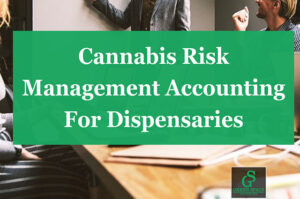
Cannabis Risk Management Accounting For Dispensaries
As dispensary owners, you have several responsibilities and you occasionally wear different hats in your business. This is hard to juggle, especially if you don’t
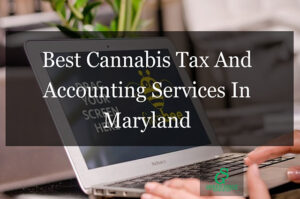
Best Cannabis Tax And Accounting Services In Maryland
If you’re a dispensary or cannabis owner looking to minimize your potential fines or fees accruing from local authorities, then you have come to the

Master Cannabis Cost Accounting For Dispensaries: Key To Profitability
Your costs are part of operating your dispensary. They will always be there, regardless of the stage that your business is under. Knowing how to
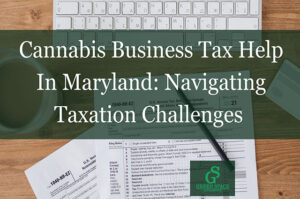
Cannabis Business Tax Help in Maryland: Navigating Taxation Challenges
Taxes are a little challenging to understand and manage, especially if you are in the cannabis industry. The industry has a set of regulations your

Financial Services Offered In The Cannabis Industry
Financial services offered in the cannabis industry can provide cannabis companies security or protection for their money. Many owners practice cash handling practices that can
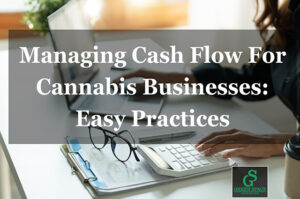
Managing Cash Flow For Cannabis Businesses: Easy Practices
Managing cash flow is a challenge if you’re trying to maintain it for financial stability. Without a stable cash flow system in place, your business
